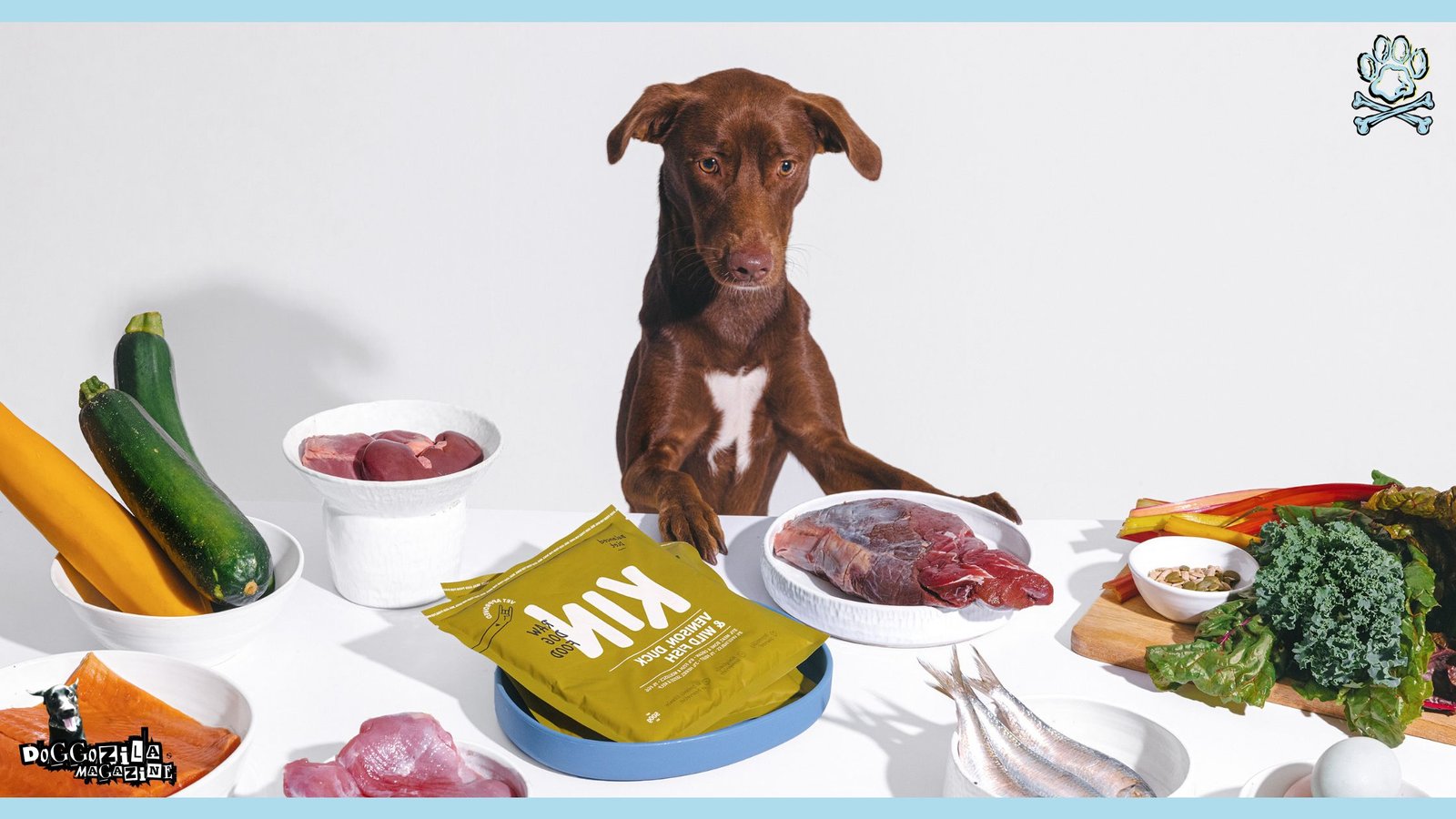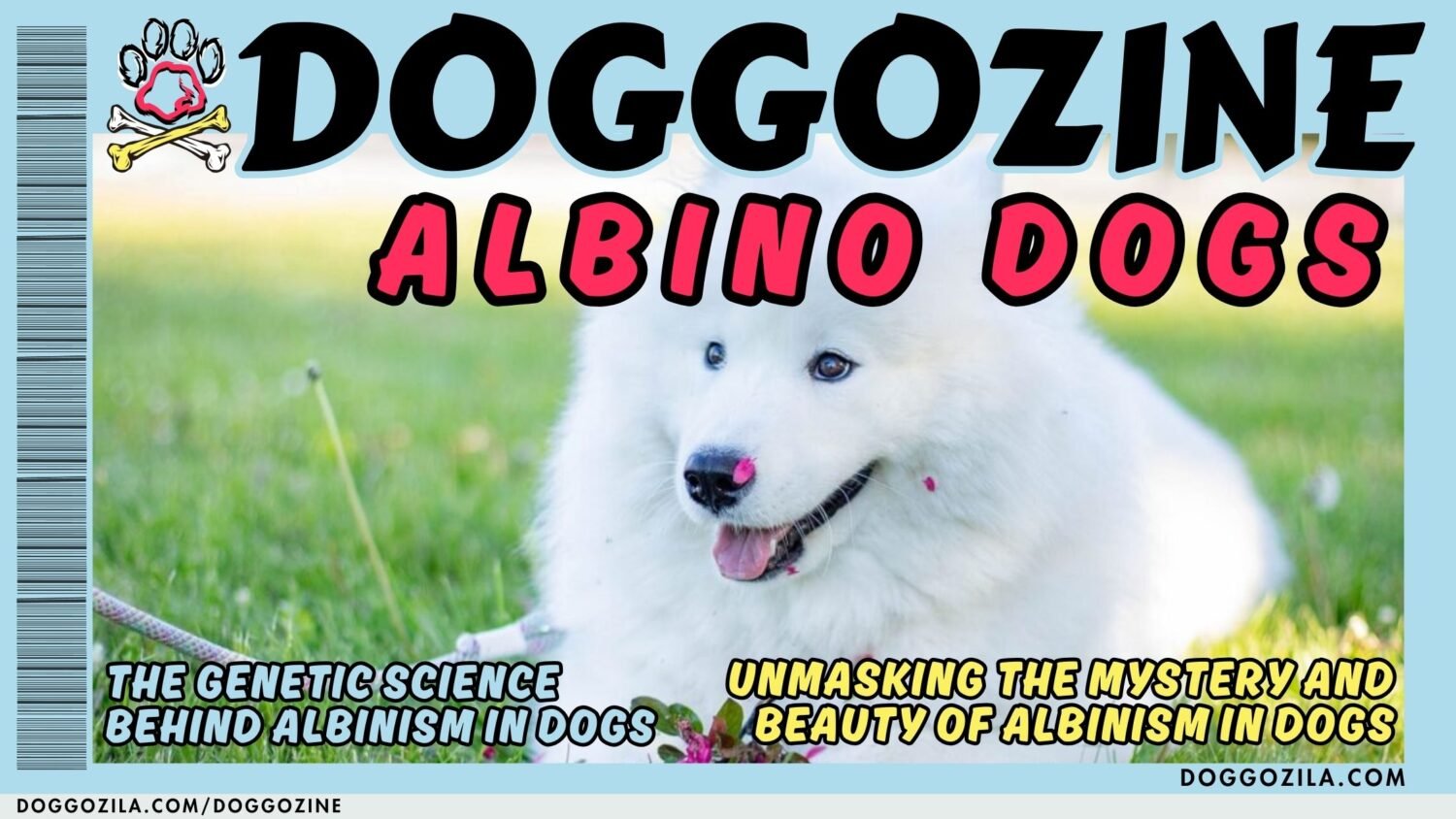Just like us, dogs require a balanced diet to maintain their health and vitality. Fiber plays a crucial role in this balance. While many dog owners often focus on protein or fats, it’s easy to overlook the importance of fiber in their canine companion’s diet. High-fiber dog food recipes can significantly enhance your dog’s digestive health, making it an essential component of a wholesome diet.
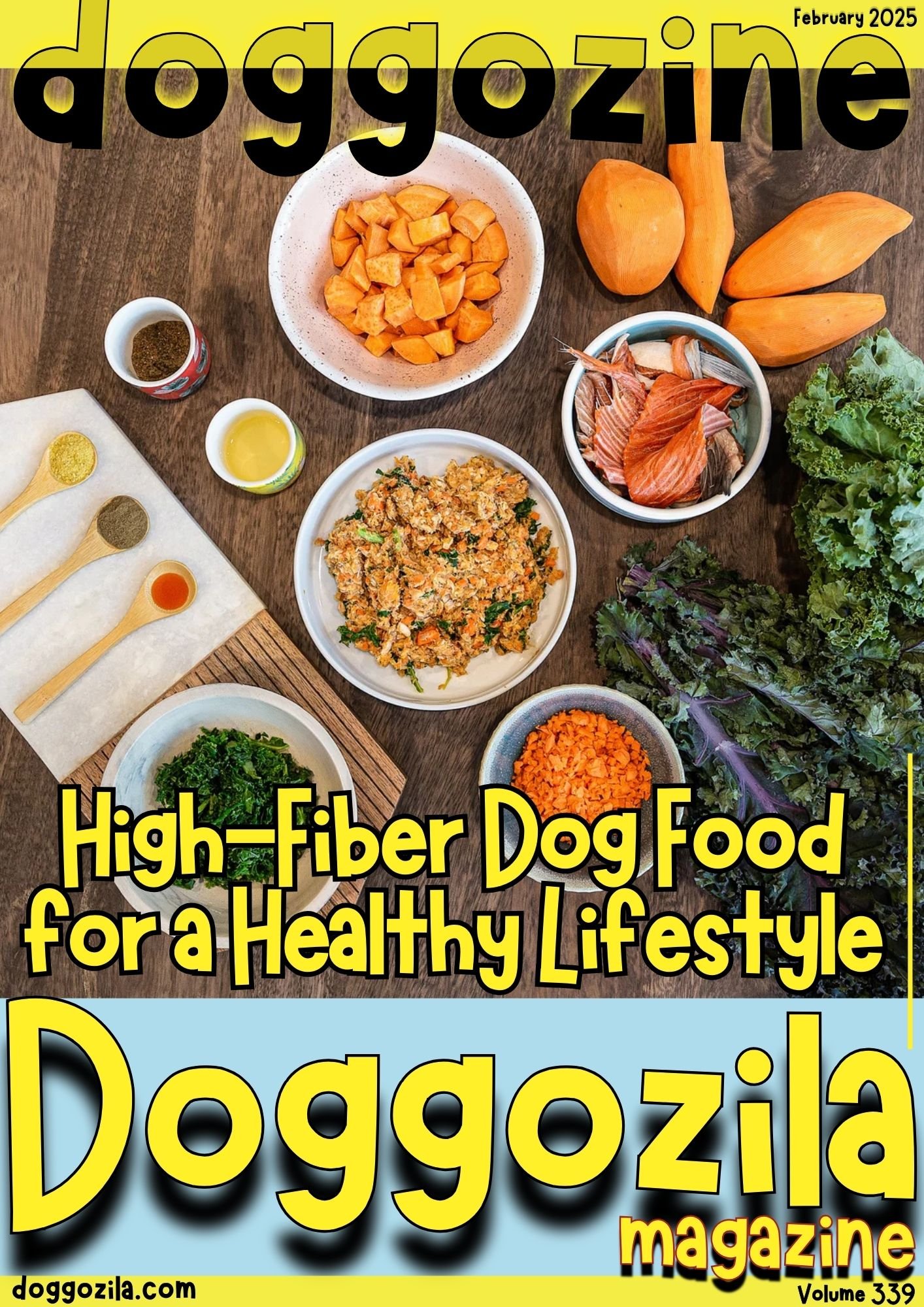
THE IMPORTANCE OF FIBER IN YOUR DOG’S DIET
Fiber is a crucial component of a dog’s diet, playing a significant role in maintaining digestive health and overall well-being. It is broadly categorized into two types: soluble and insoluble fiber, both of which offer distinct benefits. Soluble fiber dissolves in water and forms a gel-like substance in the digestive tract, helping to slow down digestion and improve nutrient absorption.
Soluble and Insoluble Fiber
Common sources of soluble fiber include oats, peas, and apples. This type of fiber is particularly beneficial for dogs with gastrointestinal issues, as it can help regulate blood sugar levels and promote a feeling of fullness. On the other hand, insoluble fiber adds bulk to the digestive system and aids in the regularity of bowel movements.
This type of fiber does not dissolve in water and is typically found in vegetables, whole grains, and nuts. Including insoluble fiber in your dog’s meals can help prevent constipation and support healthy gut motility. Furthermore, it can assist in weight management by making dogs feel satiated without adding excessive calories to their diet.
Balanced Dog Diet Rich in High-Fiber Food
Incorporating high-fiber recipes into your dog food can have an array of health benefits beyond digestion. A dog diet rich in fiber can contribute to a healthier weight by promoting satiety and reducing the likelihood of overeating. Additionally, fiber may play a role in reducing the risk of certain diseases, including diabetes and specific types of cancer.
As part of a balanced diet, it is essential to include an adequate amount of fiber to support your dog’s health. Overall, understanding the importance of fiber in your dog diet highlights the need for high-fiber food recipes. By ensuring that your dog receives a blend of both soluble and insoluble fiber, you contribute significantly to their well-being and longevity.
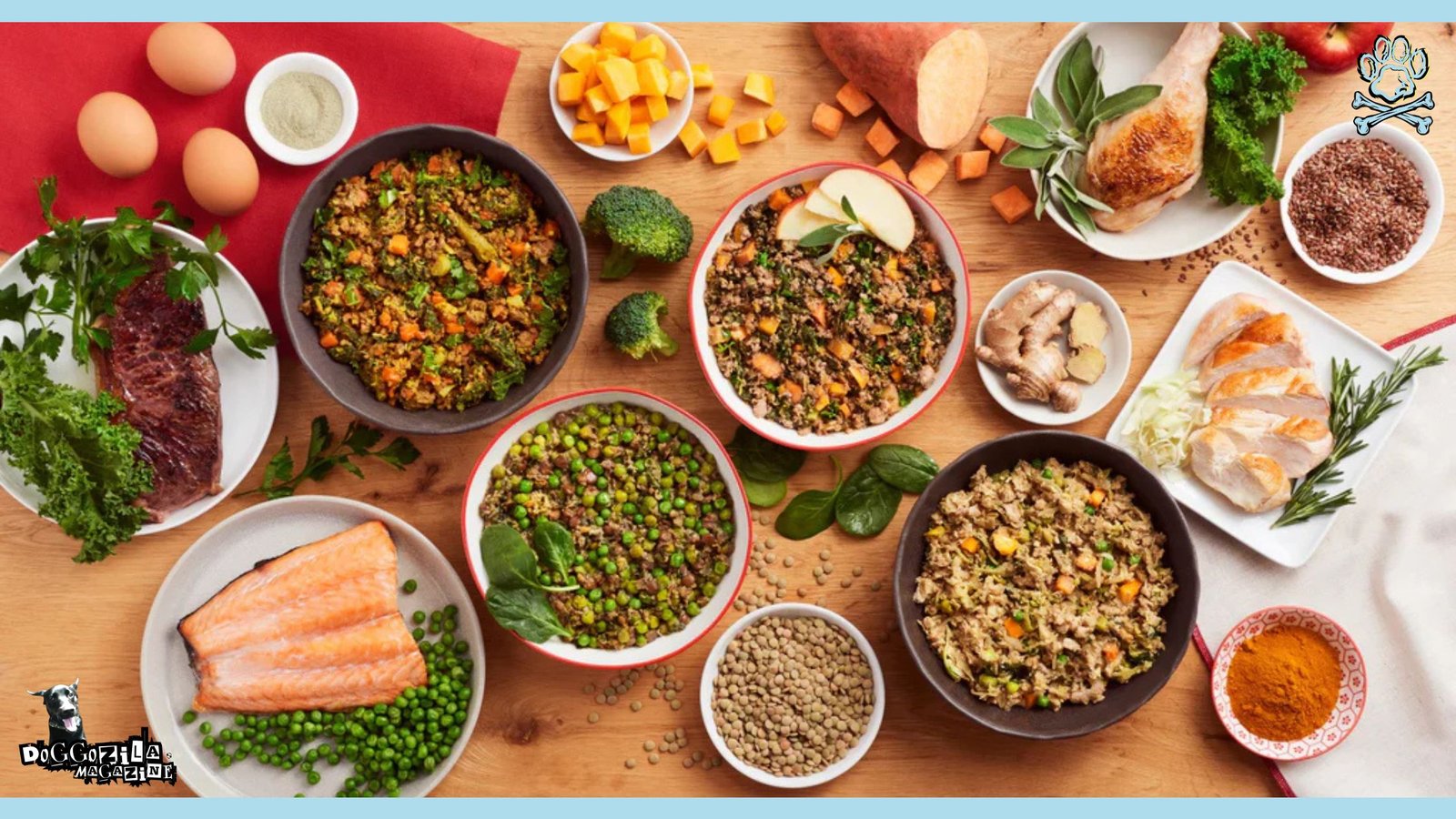
SIGNS YOUR DOG NEEDS MORE FIBER
Understanding the dietary needs of your dog is crucial for maintaining their health and well-being. One significant aspect of canine nutrition is fiber intake. Fiber plays a vital role in your dog’s digestive health, and recognizing the signs that your dog may require more fiber can help you make informed dietary changes.
Health Risks from Fiber-Deficiency
A common indication that your dog may be fiber-deficient is persistent constipation. If your dog is straining during bowel movements or displaying discomfort, it might signal that their digestive system is not functioning optimally. In such cases, increasing fiber-rich foods in their diet could promote healthier bowel movements.
On the other hand, diarrhea can also indicate an imbalance in dietary fiber. A lack of adequate fiber can lead to loose stools, as fiber aids in absorbing water in the digestive tract. If your dog experiences frequent episodes of diarrhea, assessing the fiber content of their diet is essential. In addition to digestive issues, dog obesity is another sign that your furry friend may need more fiber.
High-Fiber Dog Food Can Help Control Their Appetite
Fiber can help dogs feel fuller for longer, which may assist in weight management by reducing overeating. If you notice that your dog is gaining weight despite regular feeding, consider that an increase in fiber might help control their appetite. Furthermore, a noticeable lack of energy or lethargy could suggest poor nutrition, including insufficient fiber.
Dogs lacking in fiber may not derive enough necessary nutrients to maintain optimal energy levels. For pet owners, it is vital to assess these signs and consult with a veterinarian regarding your dog’s specific dietary needs. By paying attention to your dog’s behavior and physical health, you can make informed decisions about increasing fiber intake, ultimately contributing to a healthier and happier life for your furry companion.
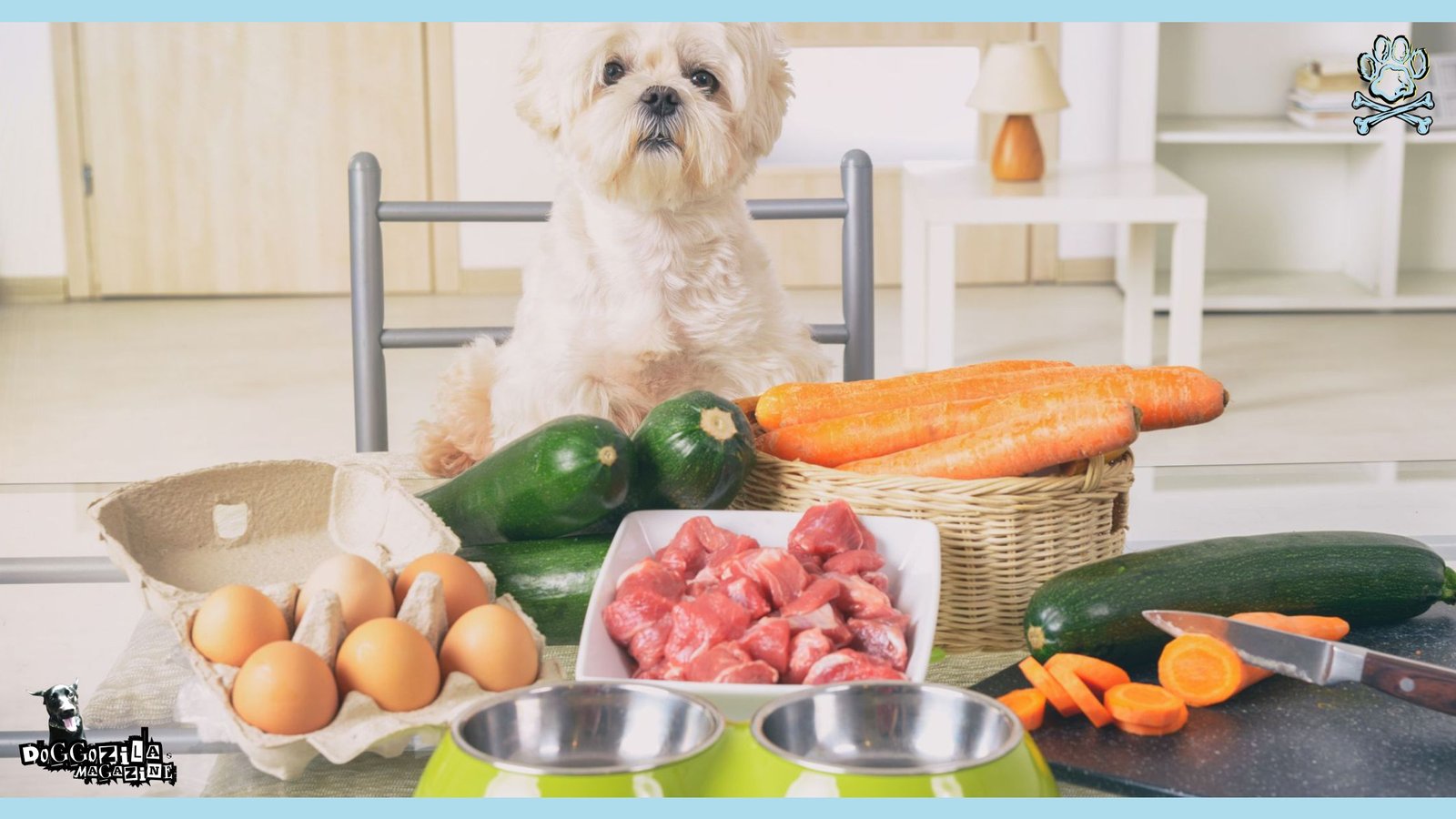
HOMEMADE DOG FOOD VS. STORE-BOUGHT OPTIONS
When it comes to the nutritional well-being of our canine companions, the choice between homemade high-fiber dog food and commercial dog food is significant.
Control Over the Ingredients and Nutritional Content
One of the primary advantages of preparing homemade dog food is the increased control over the ingredients used. Pet owners can select whole, natural components tailored to their dogs’ specific dietary needs, ensuring that each meal is both nutritious and palatable. For dogs with food sensitivities or allergies, homemade recipes provide an effective way to avoid harmful additives and allergens commonly found in mass-produced commercial options.
Another notable benefit of homemade recipes is the ability to customize the nutritional content based on individual health requirements. For instance, if a dog struggles with certain health issues such as obesity or gastrointestinal disorders, owners can incorporate higher fiber sources such as pumpkin or sweet potatoes into their meals. This personalization can promote better digestion, weight management, and overall health, elevating the quality of life for many pets.
Potential Downsides Associated with Preparing Homemade Dog Food
However, it is essential to recognize potential downsides associated with preparing homemade dog food. Crafting balanced meals can be time-consuming and may require a level of knowledge regarding canine nutrition to ensure all required vitamins and minerals are included. Unlike commercial dog food, which is often formulated to meet specific dietary guidelines, homemade options may inadvertently lead to nutritional imbalances if not adequately researched.
Additionally, not all pet owners may have the time or resources to consistently prepare meals, which could inhibit the adoption of homemade diets. In evaluating whether homemade high-fiber dog food recipes or store-bought options are more suitable, it is crucial to consider these factors carefully. The ability to control ingredients and tailor meals offers distinct advantages, but potential challenges in meal preparation and nutritional adequacy must also be addressed to promote a healthy lifestyle for dogs.

RARE HIGH-FIBER INGREDIENTS TO INCLUDE IN YOUR DOG FOOD RECIPES
Incorporating rare high-fiber ingredients into your dog’s diet can significantly boost their health and well-being. A few unique options stand out due to their nutritional benefits and fiber content.
Chia Seeds
One noteworthy ingredient is chia seeds. These tiny seeds pack a powerful punch, containing approximately 34 grams of fiber per 100 grams. Rich in omega-3 fatty acids and antioxidants, chia seeds promote digestive health and aid in weight management. They can easily be added to homemade dog food recipes by soaking them in water or mixing them directly into the meal.
Pumpkin
Another fantastic ingredient is pumpkin. It is not only rich in fiber, with about 7 grams per cup, but also provides essential vitamins and minerals. Pumpkin is known for its role in maintaining gut health and helping alleviate digestive issues such as constipation and diarrhea. Pureed pumpkin can be seamlessly integrated into dog food recipes, serving as a hearty base or an enriching addition to various dishes.
Sweet Potatoes
Sweet potatoes also offer impressive fiber content, with approximately 4 grams per 100 grams, along with a wealth of vitamins A and C. This nutritious ingredient is excellent for boosting your dog’s immune system and can be prepared in multiple ways, such as baking or boiling, and blended into meals for added flavor and texture.
Certain Fruits
Some of the fruits, such as blueberries and apples, also contribute to a high-fiber diet. Blueberries, for instance, contain about 2.4 grams of fiber in a 100-gram serving and are rich in vitamins and antioxidants. Apples, with 2.4 grams of fiber per 100 grams, provide a crunchy texture that many dogs enjoy. Cored and chopped, these fruits make excellent treats or can be included in homemade dog food recipes for an extra fiber kick.
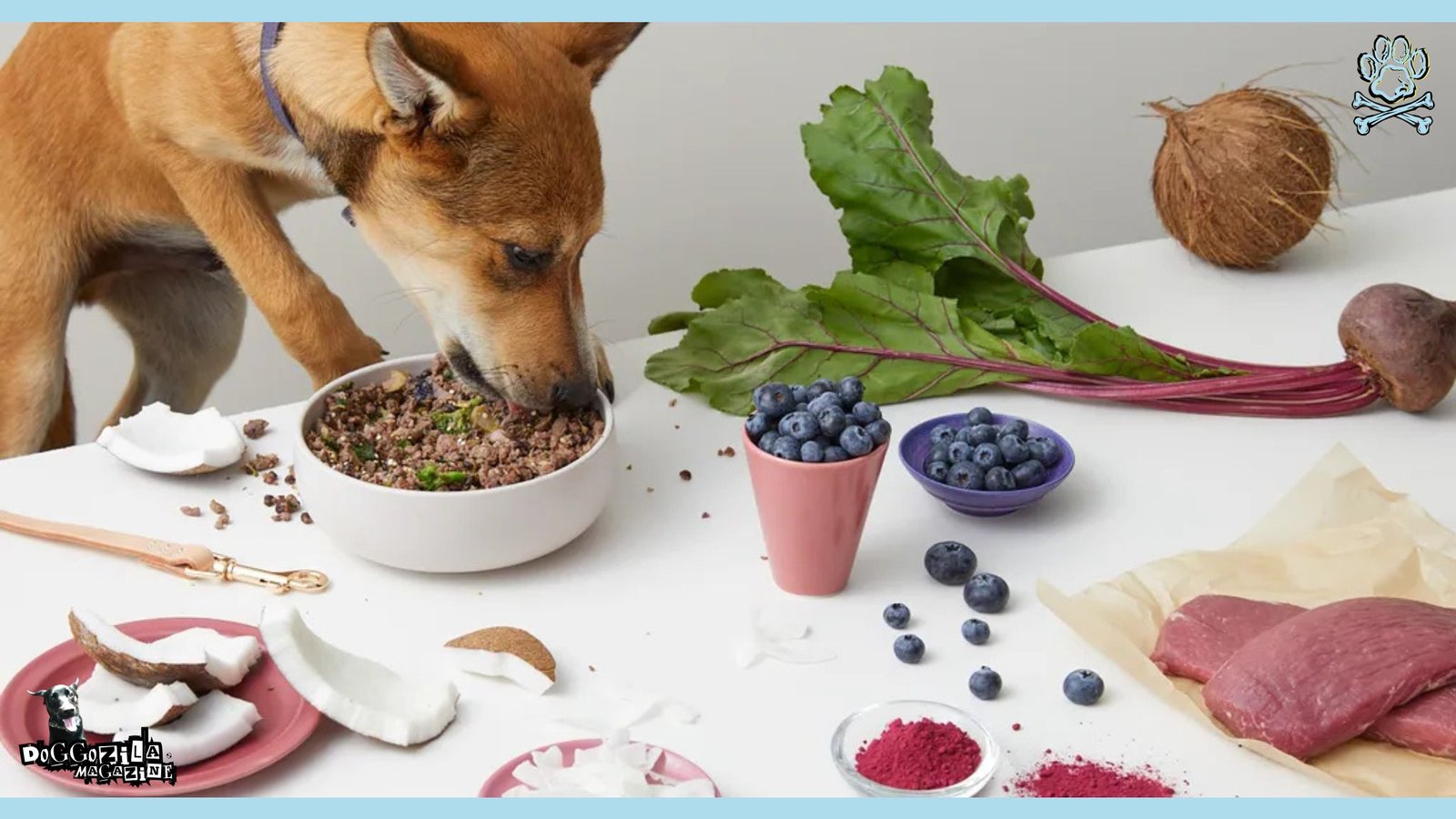
BENEFITS OF HIGH-FIBER DOG FOOD RECIPES
High-fiber dog food recipes can bring numerous benefits that can enhance their overall quality of life. One of the primary advantages is improved digestion. Fiber helps regulate the digestive tract, ensuring food moves smoothly throughout your dog’s system, which can prevent constipation and promote regular bowel movements. In addition to digestion, high-fiber food recipes can also maintain your dog weight. Fiber-rich foods tend to be less calorie-dense, keeping your pup feeling full and satisfied without the excessive calories. This is especially beneficial for dogs that are prone to weight gain.
Some studies suggest that a high-fiber diet may even help prevent certain diseases, making it a proactive approach to your dog’s long-term health.
Pumpkin and Brown Rice Delight
This wholesome recipe combines the nutritional benefits of pumpkin and brown rice, both high in fiber. For preparation, you will need 1 cup of canned pumpkin (unsweetened), 1 cup of cooked brown rice, ¼ cup of shredded carrots, and ½ cup of green beans (chopped).
Mix all the ingredients in a bowl until well combined. Serve this delight either on its own or as a topper on your dog’s regular food. The dietary fiber from pumpkin and brown rice promotes digestive health and helps in maintaining a healthy weight.
Chickpea and Sweet Potato Mash
Create a delicious mash using rich ingredients like chickpeas and sweet potatoes. Use 1 cup of cooked chickpeas, 1 medium sweet potato (boiled and mashed), and ½ cup of spinach (finely chopped). Simply combine all the ingredients and mash them together.
This recipe can be served warm or cold, giving your furry friend a fiber-packed treat. Chickpeas provide protein and fiber, while sweet potatoes are an excellent source of vitamins that contribute to overall well-being.
Quinoa and Turkey Feast
A protein-rich meal option, quinoa pairs perfectly with lean turkey. For this recipe, gather 1 cup of cooked quinoa, ½ pound of ground turkey, and ½ cup of peas. Cook the ground turkey in a skillet until fully browned.
Then, mix in the cooked quinoa and peas. This dish can be served either for dinner or as a midday playtime snack. The combination provides a notable amount of dietary fiber, keeping your dog’s digestive system functioning smoothly.
Apple and Oatmeal Crunch
This fiber-rich snack is made from simple ingredients that your dog will love! You will need 1 cup of rolled oats, 1 chopped apple (without seeds), and ¼ cup of low-sugar peanut butter. Mix all ingredients together, then shape them into small cookies.
Bake at 350°F (175°C) for 15 minutes. Let them cool before serving. Apples and oats are a great source of soluble fiber, which aids in gut health and offers a crunchy texture that promotes chewing.
Vegetable and Lentil Stew
This hearty stew is packed with vitamins and fiber. Gather 1 cup of lentils, 1 carrot (diced), 1 celery stalk (diced), 1 zucchini (diced), and 4 cups of low-sodium vegetable broth. In a pot, combine all ingredients and simmer for about 30 minutes until lentils are tender.
Allow the stew to cool before serving. The combination of lentils and vegetables provides a nutritional boost and supports healthy digestion attributable to their high fiber content.
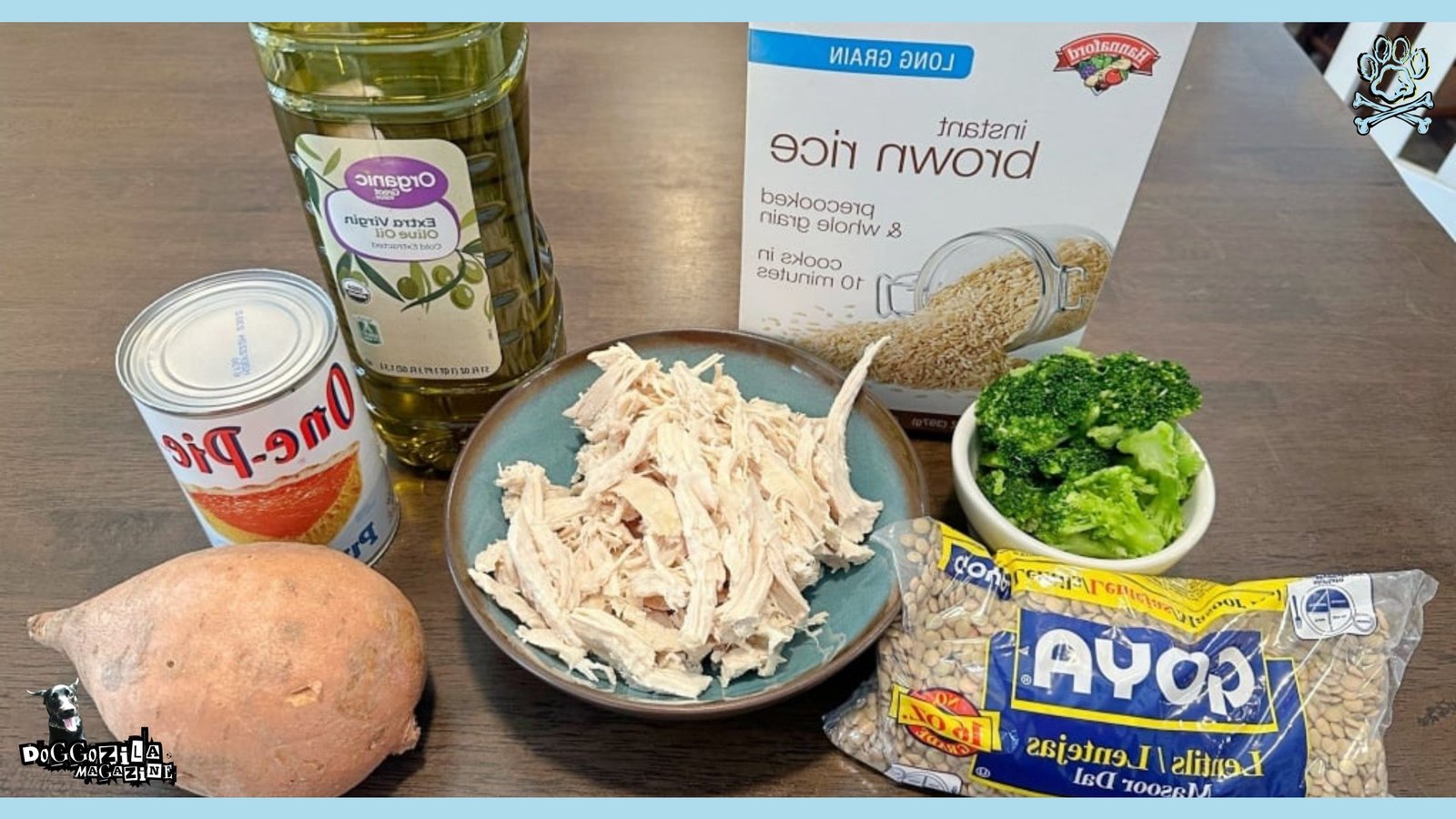
TIPS FOR INTRODUCING HIGH-FIBER FOOD RECIPES TO YOUR DOG
Introducing high-fiber foods to your dog’s diet requires a thoughtful and gradual approach to ensure a smooth transition and prevent digestive issues. The first step is to consider the current diet of your dog and how to incorporate new high-fiber options effectively. Start by selecting high-fiber dog food recipes that appeal to your pet’s taste and are safe for their consumption.
Start with Small Portions
When changing your dog’s diet, it is essential to do so gradually. An abrupt shift might lead to gastrointestinal upset. Begin by mixing a small portion of the new high-fiber food with their current diet, gradually increasing the amount over a week or two. This allows your dog’s digestive system to adapt to the increased fiber content without causing discomfort.
Portion control plays a critical role in this process. Start by replacing 10-20% of their regular food with high-fiber recipes. Monitor your dog’s reactions and stool consistency, adjusting the portions as necessary. If your dog seems to be adjusting well, you can slowly increase the ratio over time until the desired level of dietary fiber is achieved.
Be Aware of Dog Allergies or Sensitivities
Additionally, it’s vital to stay alert for any signs of dog allergies or sensitivities during the transition. Common indicators may include vomiting, diarrhea, or signs of discomfort. If such symptoms arise, revert to a previous diet and consult your veterinarian before proceeding with the changes.
Moreover, enhancing the appeal of high-fiber foods can make a significant difference in your dog’s acceptance. Consider heating the food slightly or mixing it with a little bit of low-sodium broth to make it more enticing. Experimenting with various textures and flavors can also help your dog enjoy their new high-fiber diet, promoting a healthier overall lifestyle.
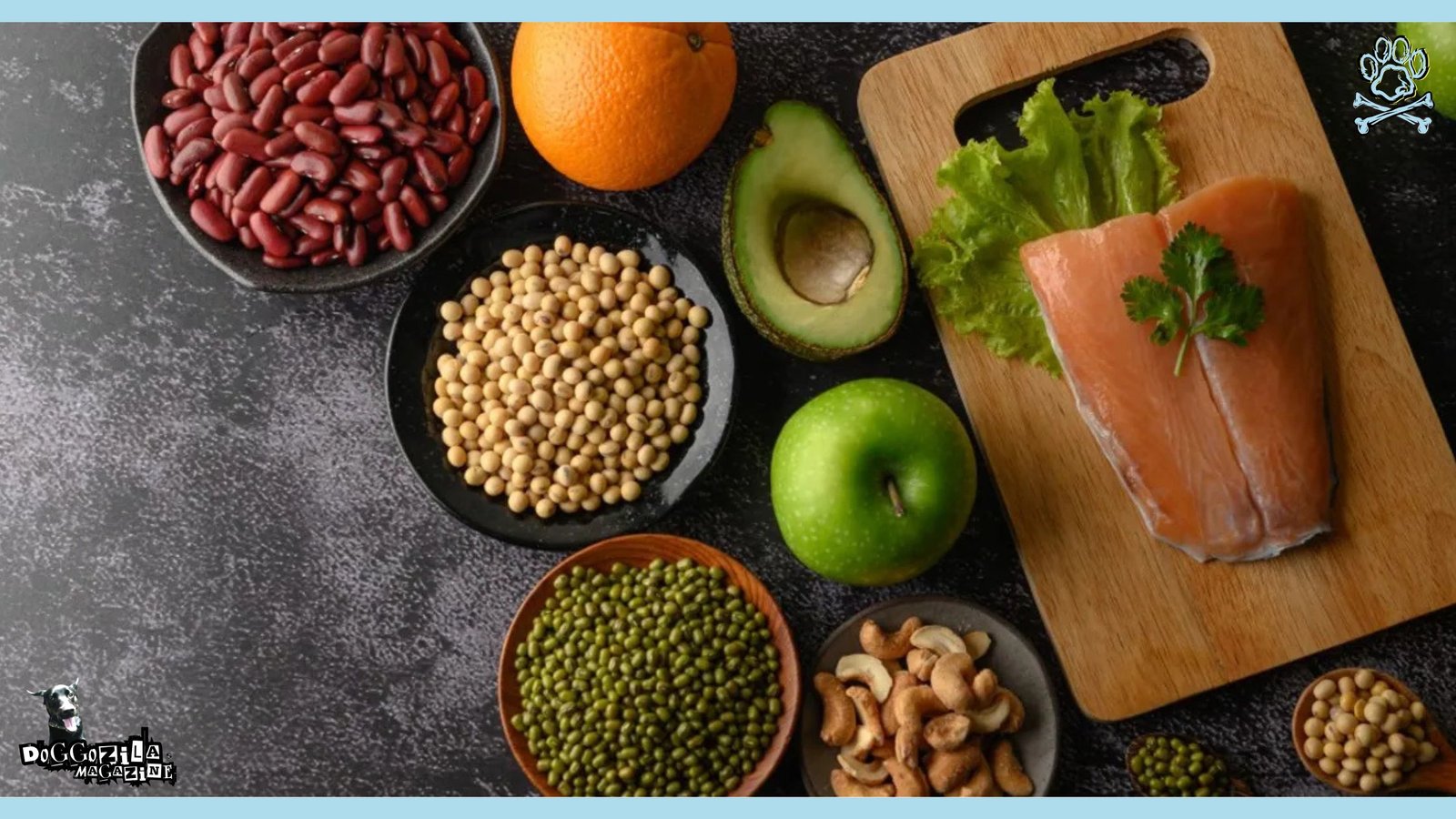
CREATING YOUR OWN HIGH-FIBER DOG FOOD RECIPES
Making homemade high-fiber dog food recipes can be a fun and rewarding experience. You can control the ingredients and ensure you’re offering your dog the best nutrition possible. Ingredients like pumpkin, green beans, and sweet potatoes are fantastic fiber sources and can be easily integrated into meals. Whole grains such as brown rice or oats can also add fiber, along with providing energy for your pet.
High-Fiber Dog Food Recipes Can Bring Healthy Lifestyle
Your dog’s meal doesn’t have to be bland, either! Mixing these high-fiber ingredients with lean proteins like chicken or turkey can create a well-rounded, delicious meal your furry friend will love. Not only will this help in promoting a healthier digestive system, but it also allows for bonding moments during meal prep.
However, it’s important to introduce any new diet gradually. Sudden changes can upset your dog’s stomach. Start by mixing a small amount of high-fiber food into their current diet and gradually increase the portion over a week or two. If you’re considering switching to high-fiber dog food recipes, always consult with your vet. They can provide tailored advice based on your dog’s specific health needs and help you determine the right amount of fiber necessary for your individual pup.
In conclusion, adding high-fiber dog food recipes to your dog’s diet can be a game-changer for their health. With benefits that range from improved digestion to weight management, it’s an excellent choice for dog owners looking to improve their furry companions’ well-being. So why not give it a try? Your dog may love it just as much as you enjoy making it!
When & Why It’s Necessary to Consult with a Veterinary
When considering a change in your dog’s diet, particularly an increase in fiber intake, consulting with a veterinarian is paramount. Dogs, like humans, have unique nutritional needs that can vary based on their age, breed, size, and overall health. A veterinarian serves as an essential resource in this regard, guiding pet owners through the complexities of canine nutrition.
They can provide tailored advice and help determine the most suitable dietary adjustments for your dog, ensuring a balanced and healthy transition. There are specific scenarios in which seeking a vet’s opinion becomes crucial. For example, dogs with pre-existing health conditions—such as diabetes, obesity, or gastrointestinal disorders—may require customized dietary approaches.
In these instances, a sudden increase in fiber could exacerbate their conditions or interfere with ongoing treatments. A veterinarian’s insights can not only help identify the safest and most beneficial high-fiber dog food recipes but can also prevent possible complications arising from dietary changes. Moreover, dogs on special diets—like those prescribed for allergies or metabolic issues—must be monitored closely when altering their nutrition.
Prioritizing Your Dog’s Health and Well-Being is Essential
Understanding the implications of fiber-rich foods in relation to specific dietary restrictions can only be effectively addressed by a qualified professional. Additionally, if your dog is undergoing medication or recovery from surgery, adjusting their fiber intake without veterinary guidance may hinder their healing process.
Ultimately, responsible pet ownership entails prioritizing your dog’s health and well-being. Engaging with a veterinarian before implementing significant changes to their diet not only fosters a better understanding of their individual needs but also promotes a healthier and happier life for your canine companion. By ensuring that any new dietary plan is thoughtfully considered and professionally endorsed, you contribute positively to your dog’s long-term health outcomes.
